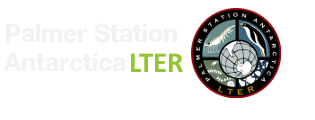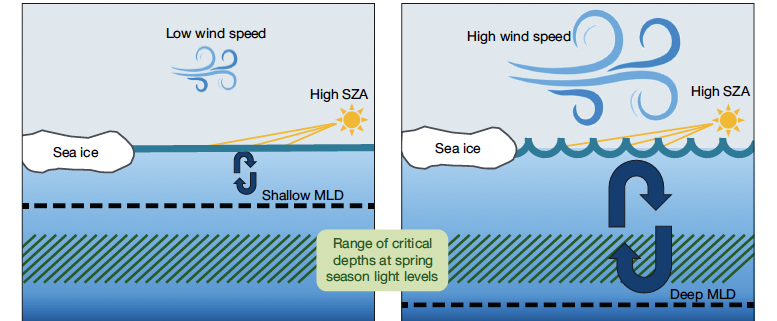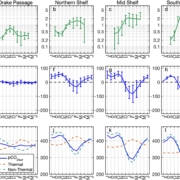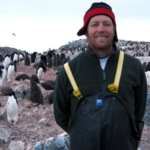New paper on changing phytoplankton phenology along the Antarctic Peninsula
In a recent paper, Jessica Turner, a PAL collaborator and Postdoctoral Associate at the University of Connecticut, found that phytoplankton blooms are starting later rather than earlier over time, likely driven by increased wind mixing. Her coauthors include Heidi Dierssen, Oscar Schofield, Heather H. Kim, Sharon Stammerjohn, David R. Munro and Maria Kavanaugh.
Abstract: Climate change is altering global ocean phenology, the timing of annually occurring biological events. We examined the changing phenology of the phytoplankton accumulation season west of the Antarctic Peninsula to show that blooms are shifting later in the season over time in ice-associated waters. The timing of the start date and peak date of the phytoplankton accumulation season occurred later over time from 1997 to 2022 in the marginal ice zone and over the continental shelf. A divergence was seen between offshore waters and ice-associated waters, with offshore bloom timing becoming earlier, yet marginal ice zone and continental shelf bloom timing shifting later. Higher chlorophyll a (chl a) concentration in the fall season was seen in recent years, especially over the northern continental shelf. Minimal long-term trends in annual chl an occurred, likely due to the combination of later start dates in spring and higher chl a in fall. Increasing spring wind speed is the most likely mechanism for later spring start dates, leading to deeper wind mixing in a region experiencing sea ice loss. Later phytoplankton bloom timing over the marginal ice zone and continental shelf will have consequences for surface ocean carbon uptake, food web dynamics, and trophic cascades.
You can find the full paper here…
Turner, J. S., H. Dierssen, O. Schofield, H. H. Kim, S. Stammerjohn, D. R. Munro, and M. Kavanaugh. 2024. Changing phytoplankton phenology in the marginal ice zone west of the Antarctic Peninsula. Mar. Ecol. Prog. Ser. 734: 1–21. doi:10.3354/meps14567


 2025
2025
 This site was developed with the support of the National Science Foundation under Grant No. OPP-2224611 and OPP-2026045. Any opinions, findings, and conclusions or recommendations expressed in this material are those of the authors and do not necessarily reflect the views of the National Science Foundation.
This site was developed with the support of the National Science Foundation under Grant No. OPP-2224611 and OPP-2026045. Any opinions, findings, and conclusions or recommendations expressed in this material are those of the authors and do not necessarily reflect the views of the National Science Foundation.
